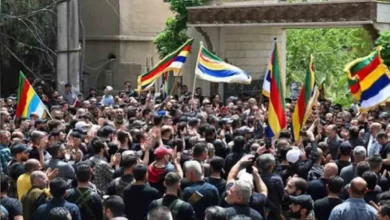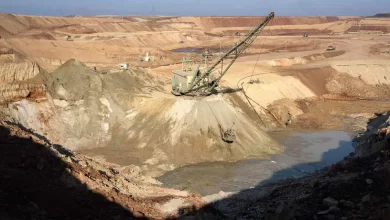North Korea confirms fired ICBM, says it was Hwasong-17
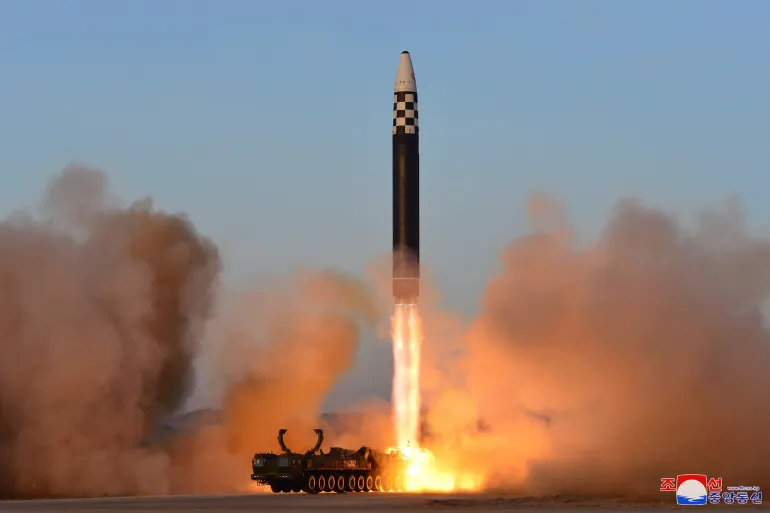
The Hwasong-17 is the largest road-mobile, liquid-fuelled ICBM in the world.
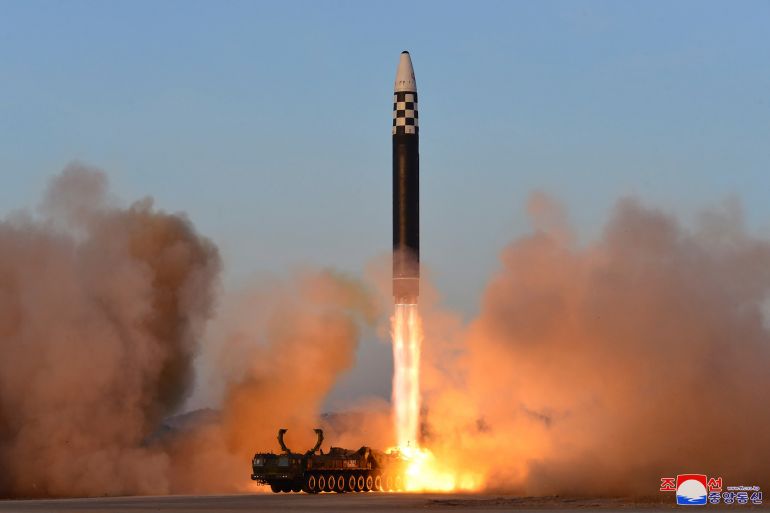
North Korea has confirmed it fired an intercontinental ballistic missile and that it was the Hwasong-17, known as the country’s “monster missile”.
The launch of the banned missile was detected by neighbours South Korea and Japan on Thursday, hours before South Korean President Yook Suk-yeol was due to fly to Tokyo for a summit with Japanese Prime Minister Fumio Kishida.
It was the latest in a series of weapons tests that have coincided with Freedom Shield – the large-scale joint military exercises between the United States and South Korea that began on Monday and that Pyongyang regards as a rehearsal for invasion.
Confirming the ICBM test on Friday, North Korea’s state media said it was intended to demonstrate a “tough response posture” and was a response to the “provocative and aggressive” military drills.
Pyongyang said the missile travelled at a maximum altitude of some 6,000 km (3,700 miles) and flew some 1,000 km (620 miles) “before accurately landing on the preset area in the open waters off the East Sea of Korea,” also known as the Sea of Japan.
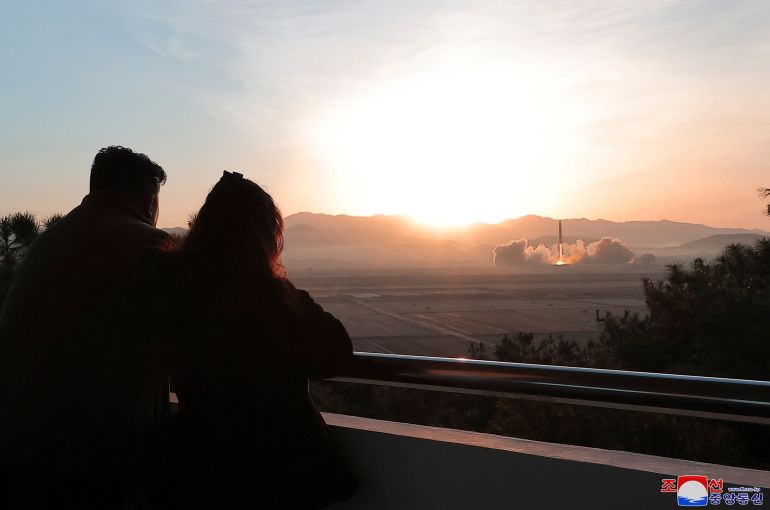
Photos accompanying the reports in state media showed North Korean leader Kim Jong Un watching the launch with his daughter and included pictures from space apparently shot by a camera mounted on the missile.
“The launching drill of the strategic weapon serves as an occasion to give a stronger warning to the enemies intentionally escalating the tension in the Korean peninsula while persistently resorting to irresponsible and reckless military threats,” state news agency KCNA said.
Seoul and Washington have ramped up defence cooperation in the face of growing military and nuclear threats from North Korea, which conducted a record number of weapons tests in 2022 as it stepped up its military modernisation campaign.
This week it has tested short-range ballistic missiles and strategic cruise missiles from a submarine.
On Friday, the US and South Korea announced they would begin the Ssangyong large scale amphibious landing exercises from March 20, with 40 British Marines also taking part. Like Freedom Shield, the amphibious exercises have been suspended since 2018 as part of the attempt to make progress on North Korean denuclearisation.
“The upcoming training will demonstrate the South Korea-US alliance’s will to realise ‘peace through strength’ and we will further strengthen the combined defence posture to defend South Korea,” Marine Corps Commander Kim Gye-hwan was quoted as saying by the Yonhap news agency.
The continued exercises are likely to mean more weapons tests from North Korea, which views such drills as a sign of the US and South Korea’s hostility.
Ballistic missile tests are banned under United Nations Security Council resolutions over North Korea’s nuclear programme.
The Hwasong-17 is North Korea’s biggest missile and is the largest road-mobile, liquid-fuelled ICBM in the world.
It is believed to have the range to deliver a nuclear warhead to targets anywhere in the US.
It was first tested in March last year, marking North Korea’s first ICBM launch since 2017.
Some analysts said there appeared to have been some modifications to the weapon since then.

